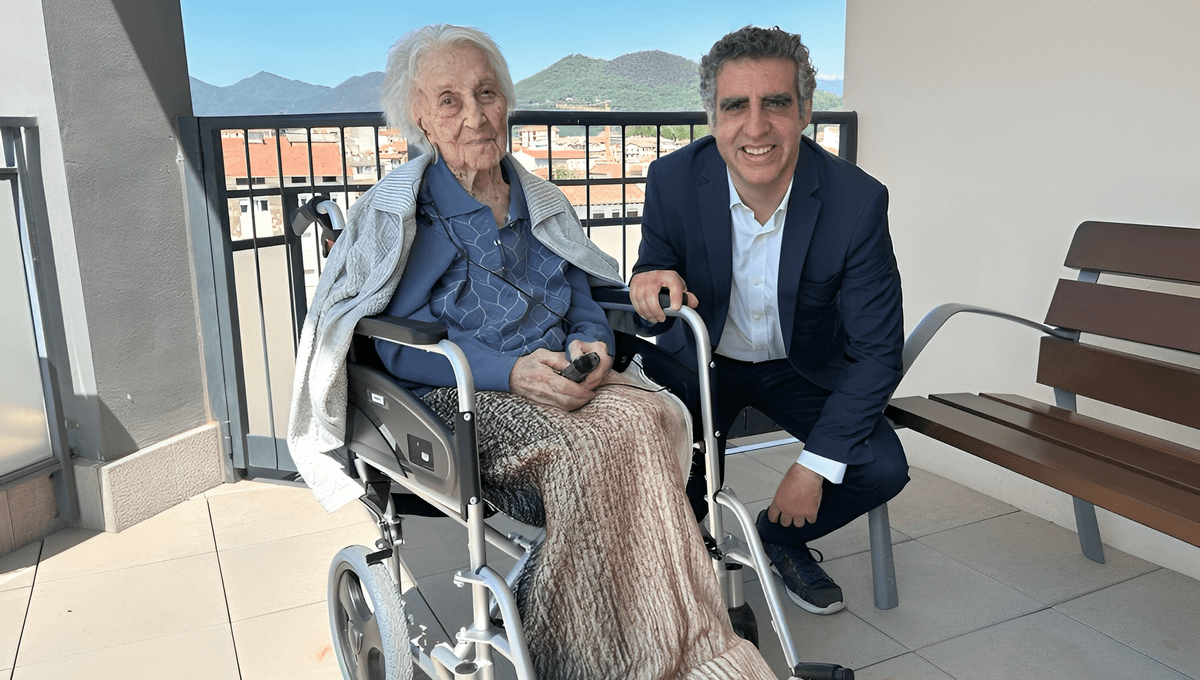
Maria Branyas lived to the ripe old age of 117 years and 168 days, making her, at the time of her death in August 2024, the world’s oldest verified living person. It’s an extraordinary feat, especially when you consider that the life expectancy for women in her native Catalonia is 86 years. So, what was the supercentenarian’s secret? Scientists took a peek at her DNA in an attempt to find out – and the results were illuminating.
“To unfold the biological properties exhibited by such a remarkable human being, we developed a comprehensive multiomics analysis of her genomic, transcriptomic, metabolomic, proteomic, microbiomic, and epigenomic landscapes in different tissues,” they write in a freshly published paper presenting their findings.
This involved analyzing samples of her blood, saliva, urine, and stools taken before her death and comparing them against other long-lived individuals, as well as much younger folks. The result is the most exhaustive study ever undertaken on a supercentenarian – someone who lives to 110 or older.
Despite having molecular hallmarks of aging, like short telomeres (the protective caps at the ends of chromosomes), a pro-inflammatory immune system, and an aged population of B lymphocytes (white blood cells), Branyas had a notable absence of major age-associated diseases, suggesting that extreme old age does not necessarily mean poor health.
“These findings illustrate how aging and disease can, under certain conditions, become decoupled, challenging the common perception that they are inextricably linked,” the researchers write.
They identified genetic variants that protect against common age-related diseases, including cardiovascular disorders, diabetes, and neurodegeneration, and found that Branyas had efficient lipid metabolism, an anti-inflammatory gut microbiome, and an epigenome associated with decelerated aging – all of which resembled younger individuals.
In fact, her biological age, based on DNA methylation, was much younger than her 117 years. While control groups had similar biological and chronological ages, there was over 23 years’ difference in Branyas’s. It was as if her cells “felt” or “behaved” as younger cells, the researchers explain.
Her extreme lifespan speaks of a “fascinating duality: the simultaneous presence of signals of extreme ageing and of healthy longevity, ” lead author Dr Manel Esteller said in a statement.
In addition to these genetic variables, Branyas’s environment may have had a part to play in her long life. She was mentally, socially, and physically active, ate well, and loved yogurt – which could go some way to explain her good gut health.
“In spite of several emotionally painful events during her last years of life, like her son’s death, she kept a strong physical and mental health throughout life with good sleep habits, a balanced Mediterranean diet, and active social life. She largely enjoyed quality time with family and friends, playing with dogs, reading books, growing a garden, walking, and playing the piano,” the team write.
The study only involved one individual, meaning its findings aren’t generalizable; however, they offer invaluable insight into the aging process, which could help in the development of new anti-aging therapies.
“These findings provide a fresh look at human aging biology, suggesting biomarkers for healthy aging, and potential strategies to increase life expectancy,” the researchers conclude.
The study is published in Cell Reports Medicine.
Source Link: The Secret To A Long Life? 117-Year-Old Woman’s DNA (And Taste For Yogurt) May Hold The Answers